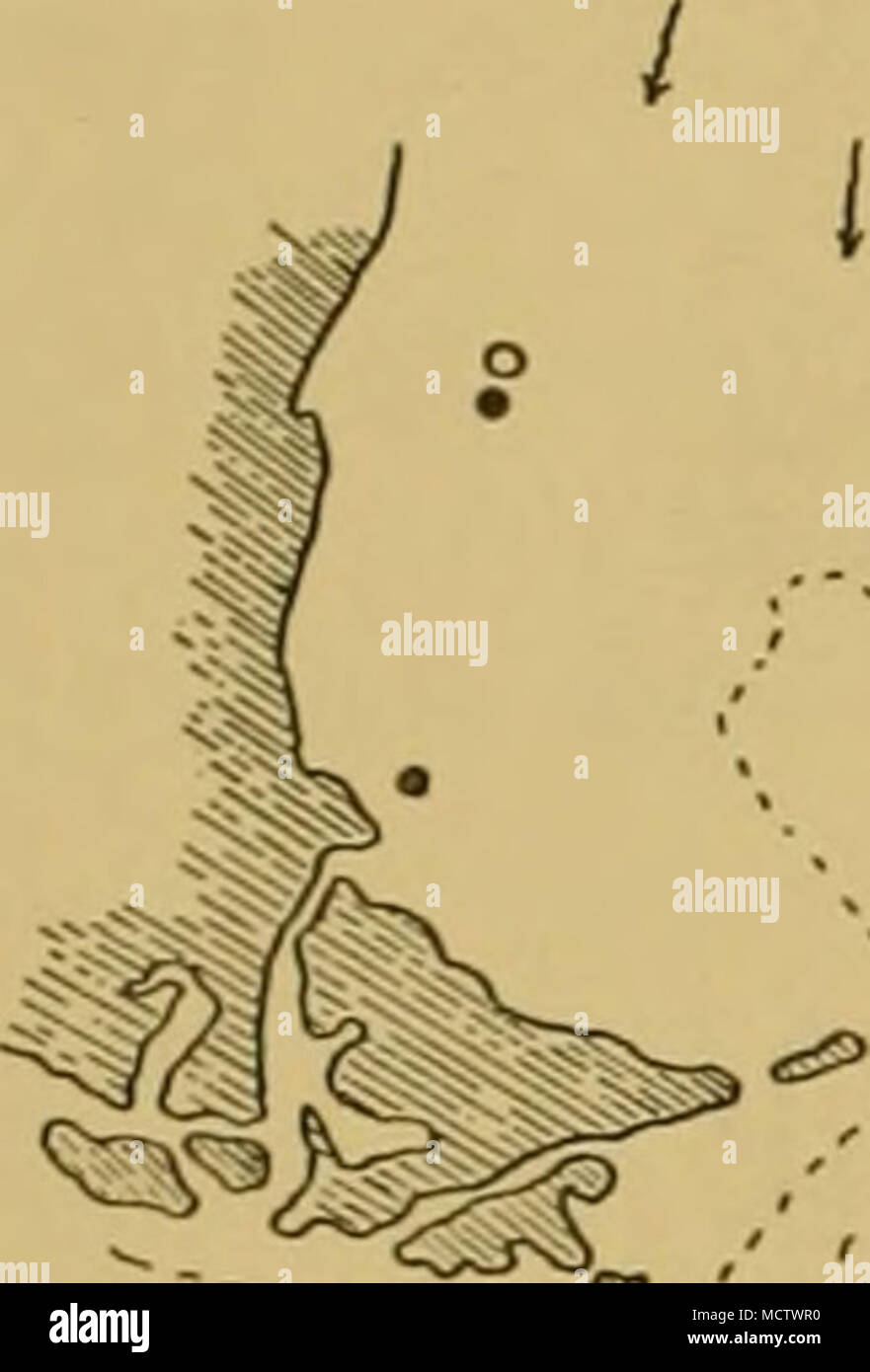. ' '•.. / / / / / a 0 n© • Parathemisto gaudichaudii a Vibilia antarctica o Cyllopus mage/lan/cus © Cyllopus lucasii Fig. i. Chart showing distribution of the four commonest pelagic Amphipods. The relative abundance is indicated approximately by the size of the signs. For details of the South Georgia area see Fig. 2. The South Orkney records are from Bate (1862). (Isobaths approximate only.) As examples of the wealth of species in some localities,, the lists of species at certain stations may be mentioned. Around South Georgia St. 42 and St. 140 both produced 25 species, St. 123 28 species, a

Image details
Contributor:
The Bookworm Collection / Alamy Stock PhotoImage ID:
MCTWR0File size:
14.3 MB (226.2 KB Compressed download)Releases:
Model - no | Property - noDo I need a release?Dimensions:
1840 x 2715 px | 15.6 x 23 cm | 6.1 x 9.1 inches | 300dpiMore information:
This image is a public domain image, which means either that copyright has expired in the image or the copyright holder has waived their copyright. Alamy charges you a fee for access to the high resolution copy of the image.
This image could have imperfections as it’s either historical or reportage.
. ' '•.. / / / / / a 0 n© • Parathemisto gaudichaudii a Vibilia antarctica o Cyllopus mage/lan/cus © Cyllopus lucasii Fig. i. Chart showing distribution of the four commonest pelagic Amphipods. The relative abundance is indicated approximately by the size of the signs. For details of the South Georgia area see Fig. 2. The South Orkney records are from Bate (1862). (Isobaths approximate only.) As examples of the wealth of species in some localities, , the lists of species at certain stations may be mentioned. Around South Georgia St. 42 and St. 140 both produced 25 species, St. 123 28 species, and St. 144 29 species. Off Clarence Island St. 170 pro- duced 36 species. In Bransfield Strait St. 175 produced 33 species. These are all bottom dwellers, and were captured in a single haul at each station. DISTRIBUTION It would be premature to attempt a lengthy discussion of the geographical distribution of the components of the Amphipodan fauna of the area investigated, especially in view of the further investigations now being undertaken by the 'Discovery II'. It may not be amiss, however, to deal briefly and tentatively with some of the conclusions to which the results of the Discovery (1925-7) investigations seem to point.